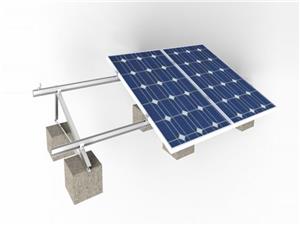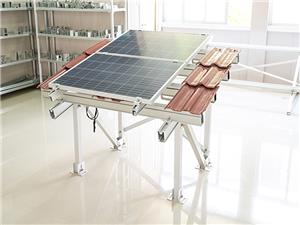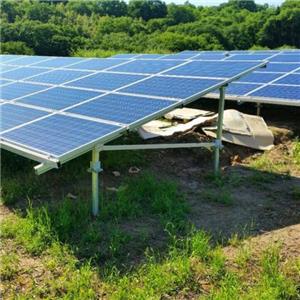HOW DOES PASSIVE SOLAR ENERGY HOME DESIGN WORK?
HOW DOES PASSIVE SOLAR ENERGY HOME DESIGN WORK?
Energy consumption is steadily increasing, and this requires the use of environmentally friendly and optimal resources. I think it's important to mention here that passive solar energy design takes advantage of a few things to minimize energy use, including building space, climate, and materials in particular.
A good design or engineering work is of particular importance in any project. A well-designed passive solar home first reduces the heating and cooling load through energy-saving strategies and gives you good results. Not only has this, but with solar energy's help, we can also fully or partially meet these reduced loads.

Modern homes require a lot of work on the design, and because of the small heating load in them, you should be careful not to over-size the glass facing south. And you also have to make sure that you have the right shade to protect the south-facing glass from the increasing load of heat and cold in spring and autumn.
Energy efficiency is at the forefront:
Before embarking on a project to design your new home or incorporate solar features into your existing home, there are some essential steps to take, and remember that the first of these is energy saving to reduce heat and cooling bills is an effective strategy. In passive solar energy home design and construction, try not to start by yourself but choose experienced building professionals; it will significantly benefit you.
Moreover, work with them (professionals and engineers) to improve your home's energy efficiency. If you are the owner of a house and are remodeling an existing home, the first step you must take is to make sure that you have a home energy audit to find a better way to reduce the cost-effect to gain maximum energy.
Selection of the site:
If you are planning a new passive solar house project, keep in mind that site selection is necessary. Remember that there should be an uninterrupted "view" of the sun on the south side of your house as this will give you good results.
Consider the potential future use of the land south of your site. Trees don't always stay small if planted; they become tall trees, and so too can a future multi-story building block the sun from reaching your home.
In some areas, zoning or other land-use regulations are carried out, which greatly benefit the landowners' solar access. If you have an area where solar access is not secure, you should find a deep place from north to south and position the house on the end of the lot in the north.
Working on passive solar energy home design:
Here I think it is better to avoid using too much technical language. In simple words, a passive solar house collects heat; this happens when the sun shines through the windows to the south and not only that but also preserves it in a material that stores heat, which is commonly called thermal mass.
Part of the home's thermal load that passive solar design can meet is commonly called passive solar fraction, and if looked at in detail, it depends on the area of glazing and the amount of thermal mass. The ideal ratio of glazing and thermal mass varies slightly depending on the climate in general.
In the future, you will learn why the best design is necessary when you find out that well-designed passive solar energy homes provide comfort in daylight and cool weather at night all year round through the use of proper ventilation. For a successful passive solar plan, its design must include some essential elements that work together and provide good results, and these are mentioned below;
1. Windows must be properly-oriented:
In general, windows or other devices that collect solar energy should be located within 30 degrees of the actual south. And it is essential to keep an eye on specific times in the summer season, from 9 am to 3 pm, not to be shaded by other buildings or trees.
Every day during the spring, autumn, and cool seasons, put shades on the windows to avoid overheating. The most important thing is to take special care of cleanliness and, therefore, keep the window glass clean.
2. Thermal mass in passive solar design:
The thermal mass in a passive solar energy house works extraordinarily. Usually, it absorbs heat from bricks, concrete, stone, and tile while sponging heat from sunlight during the heating season, and when in the cooling season, the sun does not rise for long; it absorbs heat from the warm air of the house. If you look at other thermal mass materials like water and phase change products, they are more efficient in storing heat.
Moderate climates work wonders, and in well-insulated homes, the thermal mass included in the drywall and home furnishings may be adequate; they diminish the need for extra thermal storage materials. But you have to take steps to make sure that the objects do not wedge the sunlight on the material thermal.
3. Mechanisms of distribution involved in the project:
Solar heat is usually transmitted from a specific place, such as where it is gathered and stored, to multiple house directions by convection, transmission, and radiation. The distribution mechanism varies in some homes, and small fans and blowers help distribute the heat in different directions. However, a closer look at transmission reveals that heat travels between two objects that are typically in direct contact with each other. For example, when the sun is shining and you are on a warm floor, you can't walk barefoot because it warms your feet.
When it comes to convection, heat is transferred through liquids like water or air, and passive solar houses often use convection to move air from hot areas. Radiation is relatively easy to describe; this is what you feel when standing next to a sunny window or a wood stove, and you feel the intense heat on your skin.
4. Strategies in passive solar design:
With the onset of the summer months, appropriately sized roof overhangs can provide adequate shade to vertical south windows. Other control strategies include electronic sensing devices, such as a differential thermostat that acts like a remote and prompts the fan to turn on movable vents and dampers that limit or allow heat flow.
Final Words:
Most of the details about passive solar energy home design have been disclosed above. However, I will also try to refine the plan, direct gain, indirect gain, and isolated gain. You can also comment on this post if you wish to know about passive solar energy home design comfort for the summer season; I will disclose the exact requirement.




